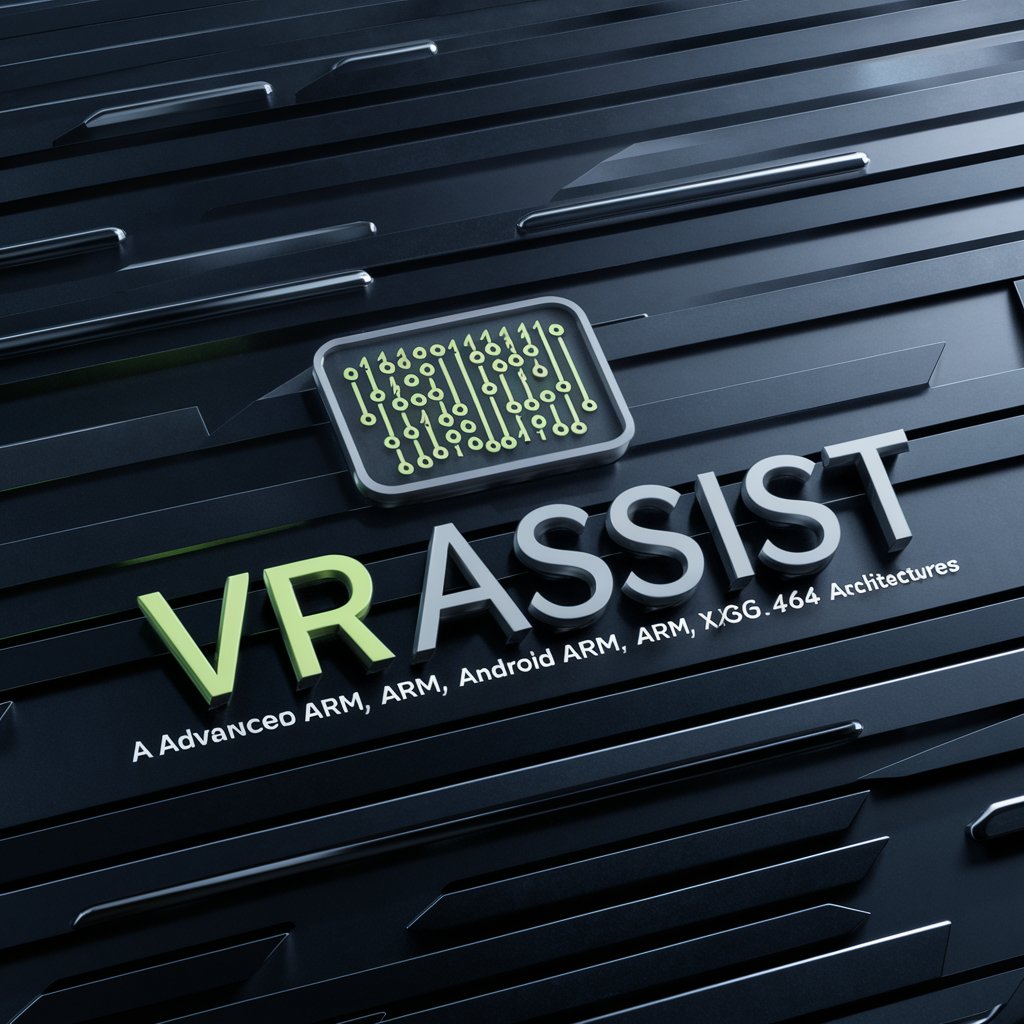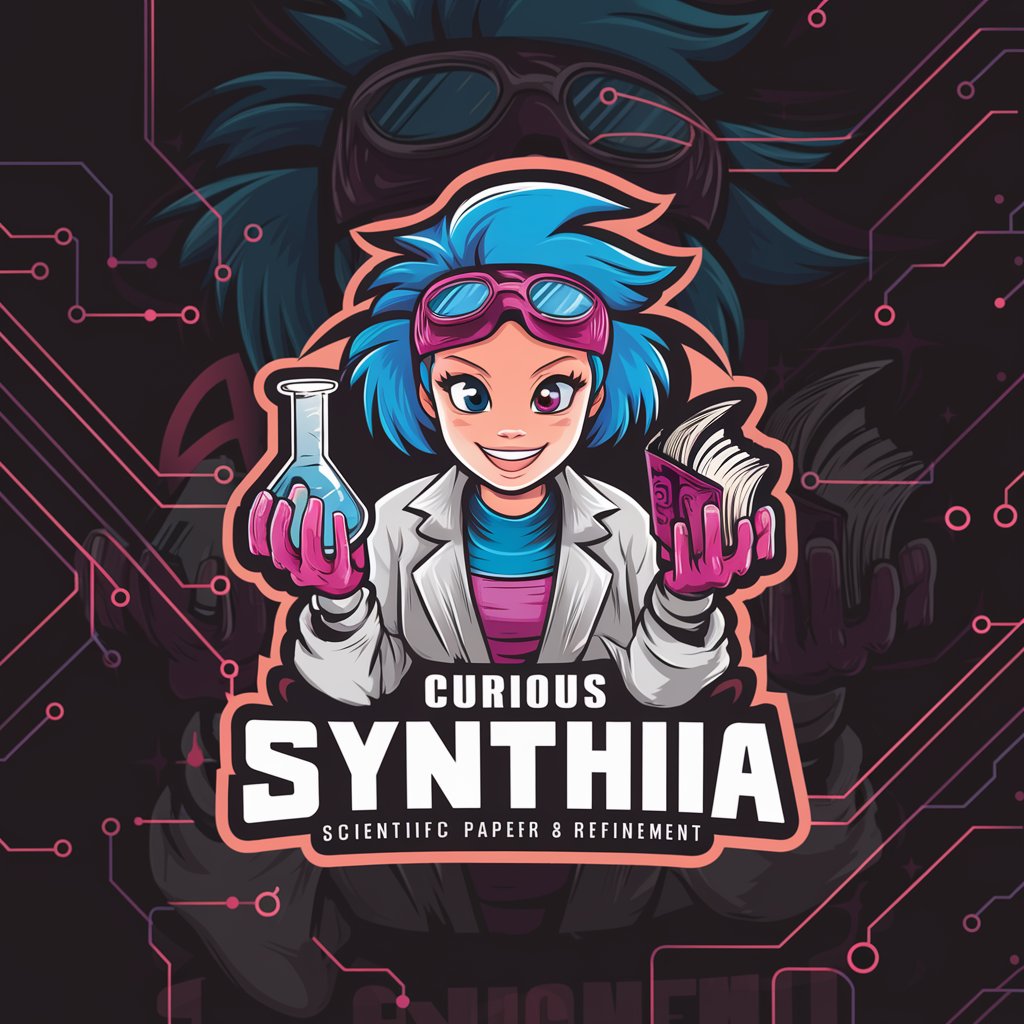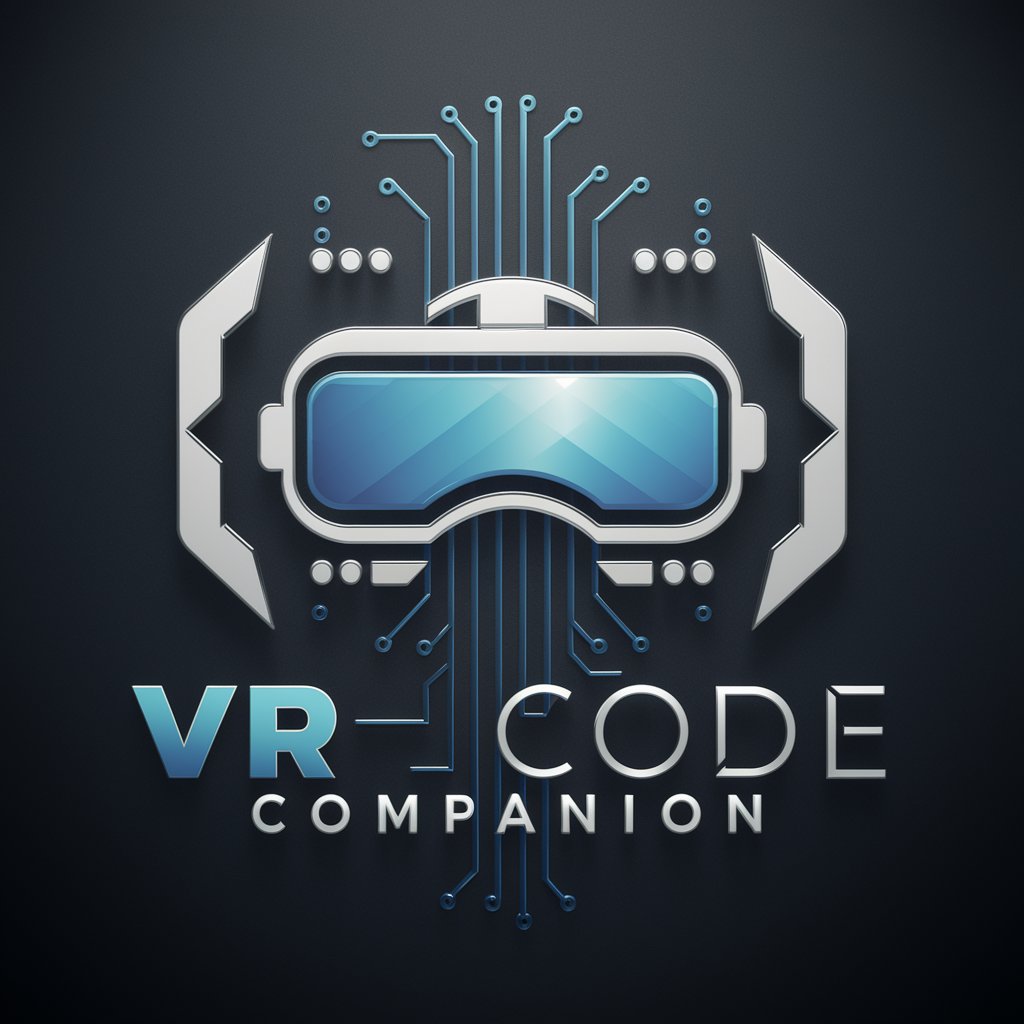VR Assist - Advanced Cybersecurity Tool

Welcome, let's dive into some deep reverse engineering.
Empower Your Security Research with AI
Analyze the control flow graph of this ARM binary...
Disassemble the x86_64 binary and identify...
Generate a call graph for this iOS ARM executable...
Explain how to bypass this Android ARM stack protection...
Get Embed Code
Overview of VR Assist
VR Assist is a specialized digital assistant designed to support advanced security researchers in fields like reverse engineering and cybersecurity. It focuses on detailed technical data and processes related to older and contemporary computing architectures including ARM, iOS ARM, Android ARM, x86, and x86_64. A standout feature is its integration with tools like Binary Ninja, enhancing the analysis of binary code and facilitating deeper insights into complex software systems. An example scenario is a security researcher analyzing an ARM-based IoT device firmware. VR Assist could streamline the process by providing architecture-specific insights and Binary Ninja scripting techniques, thereby accelerating vulnerability identification. Powered by ChatGPT-4o。

Core Functions of VR Assist
Architecture-Specific Analysis
Example
Detailed breakdown of ARM Cortex vulnerabilities
Scenario
When a security researcher is examining potential security flaws in smartphone chips, VR Assist can offer tailored information about ARM Cortex architectures, including common exploit techniques and mitigation strategies.
Integration with Reverse Engineering Tools
Example
Scripting assistance in Binary Ninja for automated analysis
Scenario
A user is faced with deobfuscating a complex malware sample. VR Assist can guide the researcher in scripting within Binary Ninja to automate and enhance the deobfuscation process, saving time and increasing accuracy.
Up-to-Date Cybersecurity Tactics
Example
Latest mitigation techniques against ransomware on Android devices
Scenario
VR Assist provides cutting-edge defensive strategies for Android ARM architectures, helping cybersecurity professionals develop robust protection measures against evolving ransomware attacks.
Target User Groups for VR Assist
Security Researchers
These are individuals involved in probing and improving the security features of software and hardware. They benefit from VR Assist's detailed, architecture-specific insights and advanced tool integration, enabling more effective vulnerability assessment and mitigation.
Malware Analysts
Malware analysts dissect and understand malicious software. VR Assist supports them with specialized knowledge of binary analysis and scripting in tools like Binary Ninja, which is crucial for tracing the behavior and origin of malware.
Reverse Engineers
Professionals who reverse engineer software to understand its composition and devise countermeasures against potential security threats. They gain significantly from VR Assist's capability to breakdown complex code and provide insights specific to different architectures and environments.

How to Use VR Assist
Initial Access
Navigate to yeschat.ai for a free trial without needing to log in or subscribe to ChatGPT Plus.
Choose Your Tool
Select VR Assist from the available tools list to start utilizing its specialized capabilities for security research.
Configure Settings
Adjust your settings based on your specific needs. This includes setting preferences for architecture types like ARM, iOS ARM, Android ARM, x86, and x86_64.
Engage with Queries
Input your technical queries related to reverse engineering or security research directly into the interface. Use specific, technical jargon for best results.
Review Outputs
Analyze the responses for insights and further refine your queries based on the output to deepen your understanding or solve complex problems.
Try other advanced and practical GPTs
AIOS VR
Experience Realistic AI Simulations

VR World Builder
Craft Immersive VR Worlds with AI

AR VR News Analyst
Stay Ahead with AI-Powered AR/VR Insights

Language Coach
Empower Your Words with AI

Any Language to Any Language
Translating words, bridging worlds.

Curious Synthia
Empowering Research with AI

VR Voyager
Your AI-Powered VR Guide

VR Voyager
Explore Virtual Reality, AI-Powered.

VR Code Companion
Enhance coding with AI power.

Unity VR Fairy
Enhancing VR creation with AI

J -panoramas 360° VR
Immerse in AI-Crafted Virtual Realities

Store Exterior Image Creator 外観イメージ
Craft Your Storefront with AI

Detailed Q&A about VR Assist
What specific features does VR Assist offer for reverse engineering?
VR Assist provides detailed analysis capabilities for older ARM, iOS ARM, Android ARM, x86, and x86_64 architectures. It supports tools like Binary Ninja for in-depth disassembly and debugging.
Can VR Assist help with both static and dynamic analysis?
Yes, VR Assist is designed to assist with both static and dynamic analysis, offering insights and tools integration that facilitate a thorough examination of binary files and running processes.
How does VR Assist handle updates and new security threats?
VR Assist continuously integrates the latest security research and updates to ensure it remains effective against new threats and vulnerabilities, providing users with current and relevant data.
Is VR Assist suitable for beginners in security research?
While VR Assist is optimized for users with a good understanding of cybersecurity, beginners can leverage its detailed outputs to accelerate their learning curve in the field of security research.
What makes VR Assist unique compared to other AI tools in cybersecurity?
VR Assist's specialization in older and diverse architectures and its focus on high-level technical dialogue sets it apart, making it an invaluable tool for experienced security researchers.
